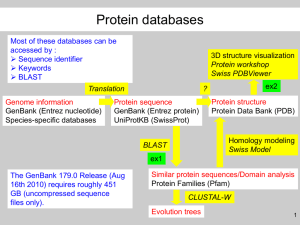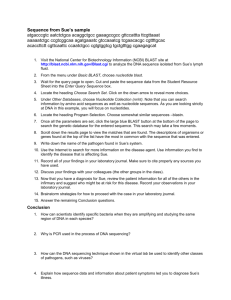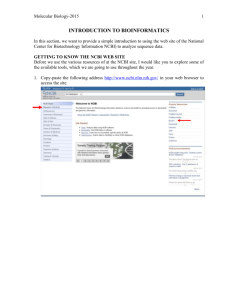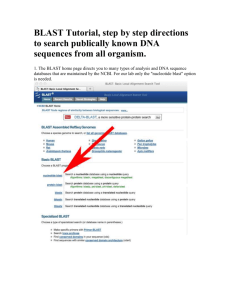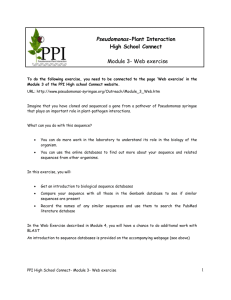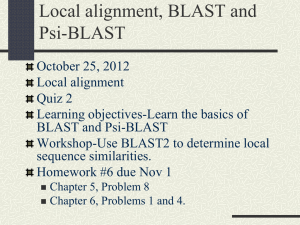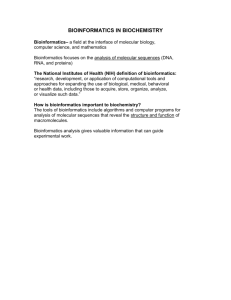All of the sequences identified by the blast search encode histone
advertisement
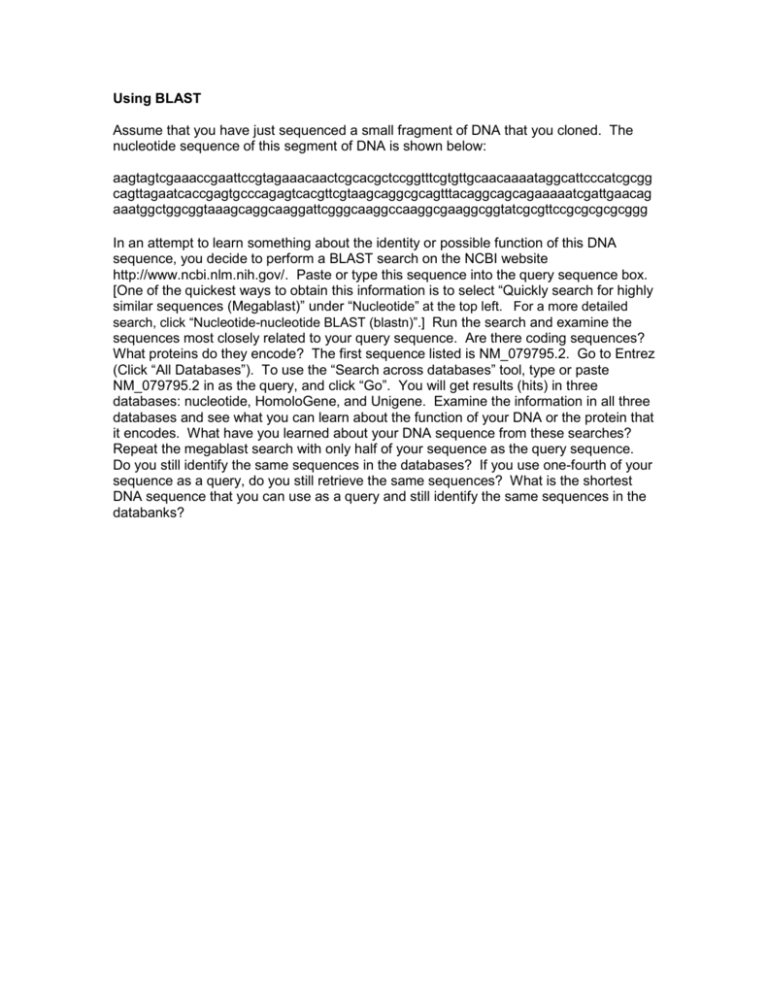
Using BLAST Assume that you have just sequenced a small fragment of DNA that you cloned. The nucleotide sequence of this segment of DNA is shown below: aagtagtcgaaaccgaattccgtagaaacaactcgcacgctccggtttcgtgttgcaacaaaataggcattcccatcgcgg cagttagaatcaccgagtgcccagagtcacgttcgtaagcaggcgcagtttacaggcagcagaaaaatcgattgaacag aaatggctggcggtaaagcaggcaaggattcgggcaaggccaaggcgaaggcggtatcgcgttccgcgcgcgcggg In an attempt to learn something about the identity or possible function of this DNA sequence, you decide to perform a BLAST search on the NCBI website http://www.ncbi.nlm.nih.gov/. Paste or type this sequence into the query sequence box. [One of the quickest ways to obtain this information is to select “Quickly search for highly similar sequences (Megablast)” under “Nucleotide” at the top left. For a more detailed search, click “Nucleotide-nucleotide BLAST (blastn)”.] Run the search and examine the sequences most closely related to your query sequence. Are there coding sequences? What proteins do they encode? The first sequence listed is NM_079795.2. Go to Entrez (Click “All Databases”). To use the “Search across databases” tool, type or paste NM_079795.2 in as the query, and click “Go”. You will get results (hits) in three databases: nucleotide, HomoloGene, and Unigene. Examine the information in all three databases and see what you can learn about the function of your DNA or the protein that it encodes. What have you learned about your DNA sequence from these searches? Repeat the megablast search with only half of your sequence as the query sequence. Do you still identify the same sequences in the databases? If you use one-fourth of your sequence as a query, do you still retrieve the same sequences? What is the shortest DNA sequence that you can use as a query and still identify the same sequences in the databanks? Answer All of the sequences identified by the blast search encode histone H2a proteins. The query sequence is identical to the coding sequence of the Drosophila histone H2aV gene (a member of the gene family encoding histone H2a proteins). The query sequence encodes a Drosophila histone H2a polypeptide designated variant V. The same databank sequences are identified when one-half or one-fourth of a given nucleotide sequence is used as the query in the blast search. Query sequences as short as 15 to 20 nucleotides can be used to identify the Drosophila gene encoding the histone H2a variant. However, the results will vary depending on the specific nucleotide sequence used as the query sequence

